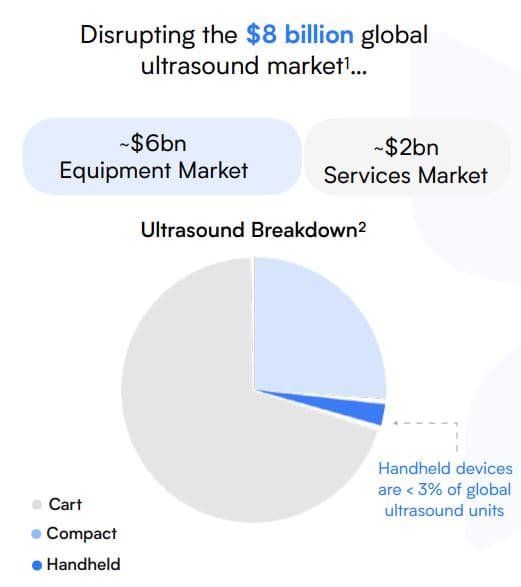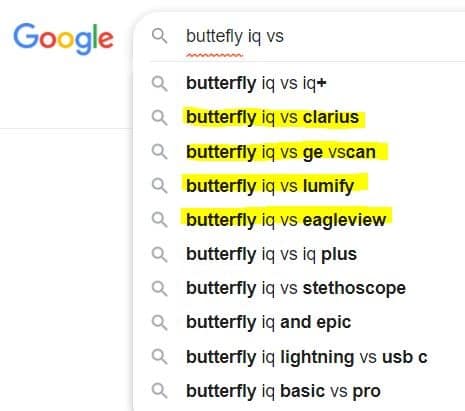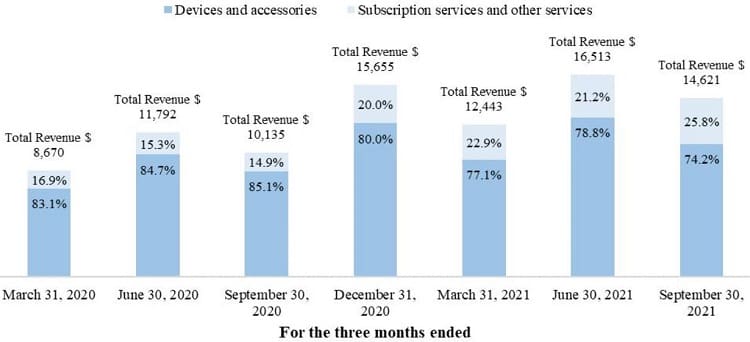Butterfly Network Stock: On Sale Now At a 40% Discount
Table of contents

“Wait for the dust to settle. If shares start to approach the $10 mark, then you’ll be paying what the smart money paid.” That’s what we said about Butterfly Network (BFLY) back in November 2020 when they decided to go public using a special purpose acquisition company (SPAC). Seems like the smart money overpaid as BFLY stock now trades at around $6 a share – a discount of -40%. If we liked Butterfly Network stock at $10 a share – and we did – we should like it even more at today’s prices. Here’s where we left things when we last wrote about Butterfly.
Given we already have a decent amount of exposure to the medical device theme, we’re not overly keen to invest here, particularly given their choice to IPO using a SPAC.
Credit: Nanalyze
We’re talking about our investments in Medtronic (MDT), Stryker (SYK), and to a lesser extent, Johnson & Johnson (JNJ). While none of these companies appear to be developing portable ultrasounds, they’re still classified in the same bucket as Butterfly Network – medical device companies. Now that Butterfly has filed additional documents with the SEC, we can arrive at a proper conclusion as to whether we like the company, love the company, or wish to avoid it. In a nutshell, the value proposition is as follows:

Butterfly Network Emerges from SPAC Cocoon
An $8 billion total addressable market (TAM) isn’t that big, especially when you consider that it’s not “blue ocean.” That means Butterfly Network needs to displace existing ultrasound solutions. And they’re hardly the only life sciences firm trying to do that. One way to gauge the competition is by examining what consumers are looking for based on Google searches.

First on the list is Clarify, a Canadian startup selling a handheld ultrasound device for around $5,000 (their cheapest one) that emphasizes “no hidden fees or recurring costs.” Contrast this to the Butterfly IQ+ which requires a subscription to purchase, but still comes in way cheaper at around $2,600 with the cheapest one-year membership option.
Then there’s General Electric (GE) which has two portable ultrasound options – the Vscan Extend ($5,185) which uses a proprietary hardware device instead of a smartphone, and the Vscan Air ($4,725) which is a wireless ultrasound device that connects to smartphones. Given the latter was only released in April 2021, it’s safe to say that the +30,000 units GE says they’ve sold so far are Vscan Extend. (To put that number in perspective, Butterfly Network sold 50,154 units in 2019, 2020, and the first three quarters of 2021.)
Then, there’s a portable ultrasound device from Philips, Lumify, that doesn’t have a price stated on their website. In September 2020, The University of British Columbia did a comparison of Lumify against Butterfly and Clarius and put the price of the Lumify probe at around $10,000.

Lastly, there’s a firm called EagleView which immediately looks suspicious when their website doesn’t provide any information about who is running the operation or where they reside. With no entry in Crunchbase, and no physical address provided, this device probably shouldn’t be considered in any purchasing decision.
Show Us the Money
Several weeks ago, Butterfly Network issued a press release on fourth-quarter earnings with an accompanying investor deck that estimated 2021 revenues to be in the range of $61.5 million to $62.5 million. Here’s how those numbers compare to the guidance given in their SPAC deck.

Companies that chose to inflate revenue projections to push their SPAC through before the music stopped aren’t getting a free pass. Yes we know, the Rona, but that should have been taken into account in the November 2020 SPAC deck. Putting that faux pas aside, the company is making great progress selling an increasing number of devices over time.

Butterfly Network Stock: Love, Like, or Avoid?
Our original piece talks about why we liked this medical imaging stock in the first place. The value proposition is easy to understand, and founder, Jonathan M Rothberg, is a serial entrepreneur who founded more than 10 healthcare/technology companies, including 454 Life Sciences, Ion Torrent, and CuraGen. There’s a software-as-a–service (SaaS) component that’s expected to approach 50% of revenues by the end of this decade, a forecast that appears on track.

Existing customers also provide recurring hardware purchases with Butterfly iQ+ users expected to engage in a hardware replacement cycle every 3-5 years. Aside from their inability to hit SPAC revenue targets (they were off by around 20%), there’s nothing, in particular, to dislike about Butterfly Network from what we can see. If they manage to stay ahead of the formidable competition, they can build a decent business around their hardware device and perhaps make for a compelling bolt-on acquisition for large medical device companies like Stryker or Medtronic. Speaking of which, these two names are why we won’t be buying Butterfly stock anytime soon.
Whenever we evaluate the merits of any given stock, we do so in the context of our broader assets under management. Right now, 3.7% of our entire AUM can be found in two medical device companies – Medtronic and Stryker – as part of our dividend growth investing strategy. Then there’s Johnson & Johnson which has around 27% of 2020 revenues coming from medical devices. That would bring our total medical device exposure to around 4.4%. Consequently, we don’t see the need to add more exposure to medical devices. Also note that Butterfly Network is a small company at a $1.2 billion market cap, and we’re actively trying to reduce our exposure to small companies going forward.
For those of you willing to go long here at a 40% discount, pay no heed to whatever price target Wall Street analysts want to ascribe and don’t try to call a bottom. Our simple valuation ratio says this stock isn’t excessively overpriced, but it’s no bargain either.
- Market cap / annualized revenues
1,200 / 58 = 21
Shares have been on a slow slide along with the broader market. If a proper correction takes place, the discount will grow accordingly.
Conclusion
Of the 84 disruptive technology SPACs we’ve covered, 87% are trading below the price institutional investors paid – below $10 a share. Perhaps we can sift through the wreckage and find a quality business or two that may represent a worthwhile investment.
While Butterfly Network appears to fit the bill, they’re going up against some stiff competition. Their hardware device is a one-trick pony – at least for now – and they’re also on the small side with a market cap of $1.2 billion. While we like the progress they’re making, we’re content with the medical device exposure we’re getting from some of the leaders in this space.









BFLY was +28.70% yesterday: $8.61. Its 52 week low was mid May: $2.31. At the time of this article it was $5.83.
Q2 2022 revenue of $19.2M (+16.3% Y/Y). Cash and cash equivalents were $310.8 million as of June 30, 2022.
They’re climbing out of the canyon. Hurray!